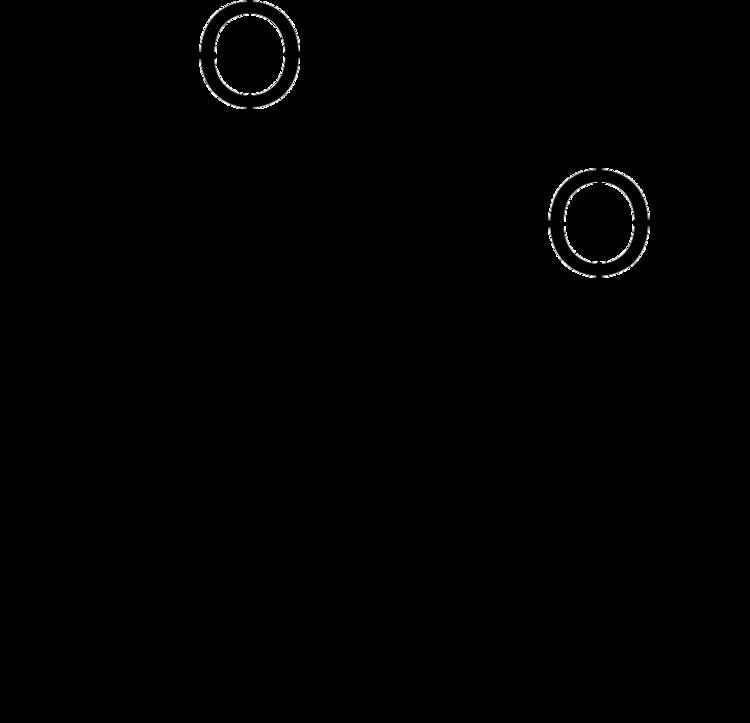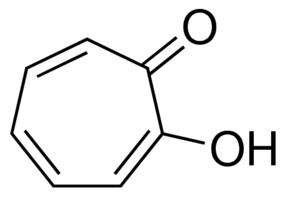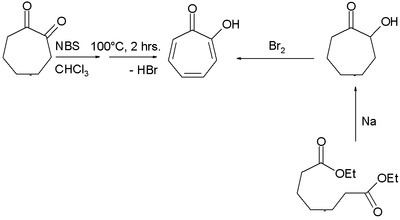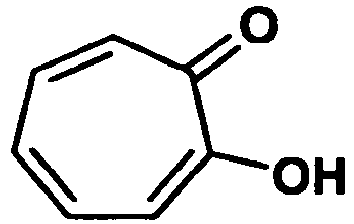Formula C7H6O2 | Molar mass 122.12 g/mol | |
 | ||
Related compounds | ||
Tropolone is an organic compound with the formula C7H5(OH)O. It is a pale yellow solid that is soluble in organic solvents. The compound has been of interest to research chemists because of its unusual electronic structure and its role as a ligand precursor. Although not usually prepared from tropone, it can be viewed as its derivative with a hydroxyl group in the 2-position.
Contents

Synthesis and reactions

Many methods have been described for the synthesis of tropolone. One involves bromination of 1,2-cycloheptanedione with N-bromosuccinimide followed by dehydrohalogenation at elevated temperatures and by acyloin condensation of the ethyl ester of pimelic acid the acyloin again followed by oxidation by bromine.

The compound readily undergoes O-alkylation to give cycloheptatrienyl derivatives, which in turn are versatile synthetic intermediates. With metal cations, it undergoes deprotonation to give chelate complexes, e.g., Cu(O2C7H5)2.
Natural occurrence
Many natural products contain the tropolone skeleton. These include puberulic acid, stipitatonic acid, stipitatic acid, puberulonic acid, sepedonin, and theaflavins of black tea. It arises via a polyketide pathway, which affords a phenolic intermediate that undergoes ring expansion.
Biological effects
It is an inhibitor of grape polyphenol oxidase and mushroom tyrosinase.
